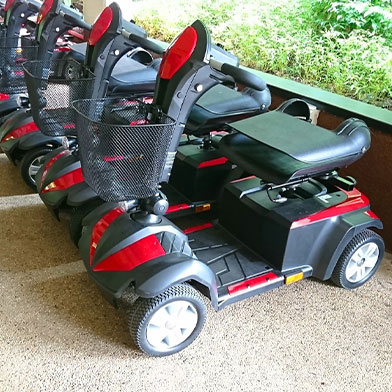
The Importance Of Proper Maintenance For Mobility Aids
Have you ever considered how regular maintenance can affect the lifespan and performance of your
The journey to reclaiming your independence and embracing mobility can be both enlightening and challenging. When you or a loved one requires a mobility aid, the decision can seem overwhelming. However, choosing the right mobility equipment is a transformative experience that has the power to improve quality of life. This article offers a comprehensive guide to help you make an informed decision, considering factors such as your specific health needs, the variety of aids available, safety, comfort and financial aspects.
Before even beginning to look at specific mobility aids, it’s critical to understand the individual needs and challenges you’re facing. Whether you’re coping with a temporary injury, a long-term condition like arthritis or age-related mobility issues, your medical history plays a significant role. Consult with healthcare professionals like your general physician, physiotherapist or occupational therapist. They can help you pinpoint your exact requirements and limitations and even recommend specific types of aids that would be most beneficial for you. For instance, someone with stability issues might benefit from a walker, while others with upper body strength limitations could be better suited for an electric wheelchair.
The world of mobility aids is as diverse as the individuals who use them. Let’s walk through some common types:
Safety and comfort should be at the forefront of your considerations. Look for mobility aids that come with ergonomic handles, padded seats and non-slip grips. Check for the availability of safety features like brakes, reflectors or built-in lights for night time use. Test how easy it is to manoeuvre the aid around corners and through doorways. An aid that is uncomfortable or hard to control is not just inconvenient but also potentially dangerous.
The cost of mobility aids can range from the tens to thousands of dollars, depending on the type and features. It’s crucial to assess your budget and check if your health insurance offers any coverage or discounts. Some government programs, such as the NDIS, may also provide financial aid for these devices. Always inquire about warranties, return policies and the availability of spare parts.
Choosing a mobility aid is an important step towards regaining your independence and improving your quality of life. With the right information, advice from healthcare professionals and careful consideration of your individual needs, you can make a decision that will serve you well. If you’re in the Gold Coast or Tweed Heads area, consider visiting Balance Mobility. We offer an extensive range of mobility aids and have helpful staff to assist you in finding the perfect solution for your needs.

Have you ever considered how regular maintenance can affect the lifespan and performance of your

Have you ever felt overwhelmed when trying to choose mobility equipment? With so many options

Have you ever wondered how mobility aids could transform the lives of individuals with mobility
ABN 21 671 123 756 (TH)
ABN 75 647 319 346 (BW)

